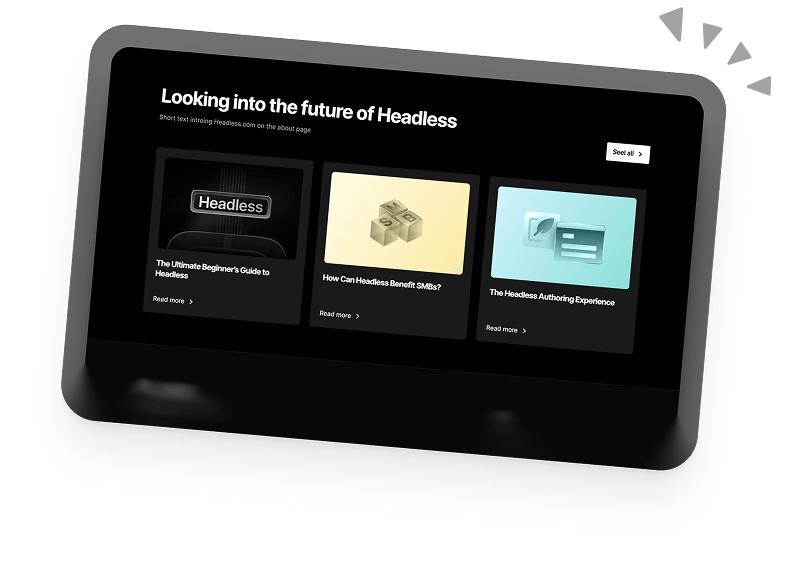Usability Testing & UX: How To Design For Your Users
Usability testing is an essential tool for UX agencies, allowing for highly effective optimisation of websites, apps, and individual site elements. Investing in user-focused design and usability testing can make a world of difference to customers and result in major boosts to conversion rates.
Usability Testing: Putting the U in UX
Usability is the cornerstone of UX. Everybody wants to have a website or app that’s user-centric. After all, if you give people a product designed to be useful and pleasing to them, it makes sense that they’ll like that product.
We’re all familiar with the famous saying that “the customer is always right”. Well, when you consider that investing in user experiences has a potential 9,900% ROI and a 400% conversion increase, that expression feels more pertinent than ever.
So why are only 55% of companies carrying out website UX testing?
The Impact Of Usability Testing
You can follow all the best practices in the book, map out user flows, and optimise endlessly but nothing beats getting input from real users.
This case study from Jakob Nielsen perfectly illustrates this point. He tested two navigation structures for an e-commerce site: one based on the company’s internal perception of its products and the other based on users’ mental models of the products.
The navigation scheme built on users’ perceptions saw an 80% success rate whereas the company’s internal perception structure had a success rate of only 9%.
What is Usability?
UX Usability testing isn’t just glorified bug testing, it looks at the ways a website, page, or application meets the needs of the user.
We measure usability through 3 primary metrics:
- Efficiency
- Effectiveness
- Satisfaction
In other words: Did it work? Was it easy? Did it feel good?
So, how does Usability testing work?
Usability testing is quite simple. At their core, usability tests are just the process of getting people to use a product and collecting data on their experience. This simplicity makes usability testing extremely versatile, resulting in some fascinating and creative testing methods.
But before we delve into those methods, let’s take a quick look at the overall process of usability testing.
- Determine a clear objective
There’s no point testing your website’s UX if you don’t know what you’re looking for. Going into a test with a clear goal in mind will ensure you get the most valuable insights.
- Decide your testing type
Different testing methods are better suited for investigating different issues. Want to know how effective your design is? Your best bet is to do some eye-tracking tests. Trying to plan site architecture? Card sorting is your friend.
Furthermore, you’ll need to decide if your tests will be moderated or unmoderated and whether they will be in person or remote.
- Pick your test users
Firstly, you’ll need to find a sample of users that most closely resemble your real audience. You’ll get the most valuable insights by testing with people that would think, act, and react the way real users would. You can find test users through your email list or by using platforms like UserTest and Userlytics.
- Define your tasks
For usability testing, your testers will need to carry out tasks. You can decide whether these tasks will be open or closed. Closed tasks are where you give testers specific steps to follow, whereas open tasks give your users freedom to decide how they go about it.
- Prepare your questions
Questions can be asked during and/or after the task. These questions should be carefully prepared beforehand to glean the most insight from the testing.
Usability Testing Methods
Contextual Inquiries
Contextual Inquiries (more commonly known as Field Studies) involve travelling to someone’s home or place of work, watching them use a product, and asking questions while they do so.
The key benefit of field studies is getting to observe someone in their natural environment completing tasks in real-time. Engaging with them in the moment lets you get feedback straight from the horse’s mouth.
Field studies also let you avoid issues that occur with other types of testing. A lot of testing methods will ask users to remember information after completing their task. These tests rely on people’s memory to collect data, and this can lead to inaccuracies. However, by having users tell you their thoughts and feelings as they happen, field studies can provide more precise data.
Eye Tracking
Ever heard of the “F Pattern”?
If you haven’t, it’s basically a way of describing the way people’s eyes scan a web page. Our eyes tend to start on the top left, making their way down the left-hand side and occasionally moving horizontally. (Apparently, some people call it the “E Pattern” but we prefer F.)
Well, this amazing concept was discovered way back in 2006 by the Nielsen Norman Group through eye-tracking. Eye-tracking uses cameras and sensors to accurately measure where eyes are looking and focusing on a page. Using this data, you can build a heatmap of a page. This will show you how well pages scan and which elements are attracting users’ attention.
The key benefit of eye-tracking is that it gathers objective, quantitative information and the data can be collected without interrupting the user’s process.
Focus Groups
A focus group involves a small group of people (less than 10) who are given a task and gathered for discussion afterwards. One of the key components to a successful UX testing focus group is effective moderation. This will ensure that everyone’s views are heard and encourage productive discussions after the task.
Focus groups don’t offer as comprehensive information as field studies and should not be the only source of usability testing but they are not without their uses.
Jakob Nielsen of the Nielsen Norman Group said that “the proper role of focus groups is not to assess interaction styles or design usability, but to discover what users want from the system.”
Card Sorting
Usually, card sorts are done in the early stages of design as they’re very handy for ironing out ideas during wireframing.
This testing exercise involves a set of cards representing web pages or steps in a process and users sort them into categories. These can either be categories you’ve defined or you can let users come up with their own categories. This is a very simple and effective usability test that determines how well your site architecture gels with users’ mental models.
When To Carry Out Usability Testing
Nothing beats usability testing for evaluating the real-world efficiency of your designs. You can carry out testing at any stage in the process to:
- Test a hypothesis (this is sometimes called exploratory usability testing)
While you’re still trying new things, usability testing is essential to confirm how well your ideas will work in the real world. Solid UX testing for interfaces and site elements can be a decisive factor in the direction of your design.
- Look for issues with a product
If your site or app is underperforming, usability testing is a worthwhile approach to weeding out UX issues that could be holding you back. Alternatively, you might just want to optimise your user experience and usability tests can point you in the right direction.
- Compare products
Lastly, you can carry out comparative testing. You can use this to choose between variations on a product (similar to A/B testing) or to compare usability with a competitor’s product.
Learn More About Usability Testing and UX
Usability testing is an indispensable part of a development and design toolkit. Getting input from real people can revolutionise website UX testing and provide a competitive advantage to brands through next-level user experiences.
At Drewl, we have years of experience crafting effective UX design, so if you’d like to know how to get the most out of usability testing, we’re here to help!
Book a 30-min Introduction Call
Let's jump on a quick intro call We'll break down your project, and pinpoint exactly how we can help.



Our clients  Holaa! love working with us see their stories below!
Holaa! love working with us see their stories below!






